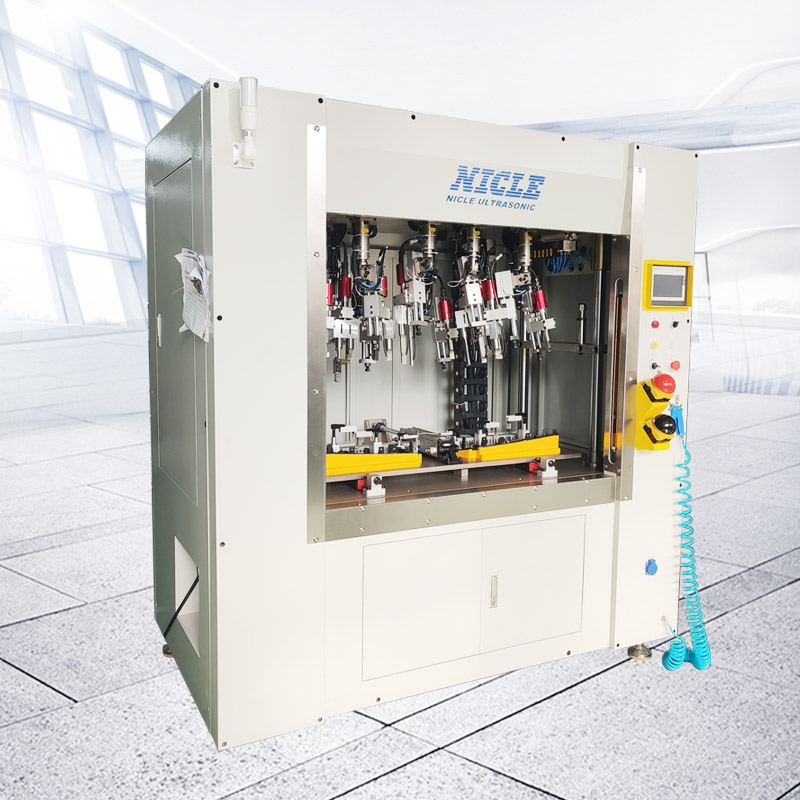CNC machining is reshaping the way ultrasonic welder machines are built. Manufacturers are leveraging its accuracy and repeatability to produce stronger, more reliable welding units. As demands grow in automotive, electronics and medical sectors, the pressure to improve the quality and durability of ultrasonic welders is only increasing.
This article looks at how modern CNC machining impacts component precision, durability, and overall performance in ultrasonic welding systems. If you work in industrial manufacturing, OEM parts supply, or precision engineering, this insight applies directly to your operations.
1. Precision That Reduces Error Margins
Ultrasonic welders rely on components like sonotrodes, boosters and horns that must operate under extreme stress and vibration. These parts demand precise geometry and tight tolerances.
CNC machining enables:
-
Micron-level repeatability on multi-axis surfaces
-
Zero-deviation fits between mating parts
-
Advanced toolpath strategies for complex contours
This level of precision results in lower failure rates, less wear, and more stable weld quality across thousands of production cycles.
2. Better Material Efficiency
Materials used in ultrasonic welding—such as titanium, aluminium alloys, and hardened steels—are expensive and sometimes difficult to machine. CNC machining allows for:
-
Optimised material removal paths
-
Near-net-shape machining
-
Tighter nesting for minimal waste
This cuts down on costs and reduces environmental impact, which is increasingly a selling point in large-scale industrial procurement.
3. Repeatability in Large-Scale Runs
CNC systems can hold the same tolerances across high-volume production. When building ultrasonic welder machines, that means:
-
Consistency in part-to-part performance
-
Fewer post-production modifications
-
Predictable assembly outcomes
Repeatability also leads to better quality control and reduces the need for skilled manual rework—a labour cost many workshops are trying to lower.
4. Multi-Axis Machining for Complex Part Geometry
Modern ultrasonic welding machines are integrating more compact and multifunctional assemblies. This requires intricate parts that can’t be made with traditional 3-axis setups.
5-axis CNC machining allows:
-
Undercuts and compound angles
-
Reduced part handling (fewer setup errors)
-
Faster prototyping-to-production cycles
Components like transducer housings or booster supports benefit directly from these capabilities.
5. Stronger Weld Interfaces from Tighter Tolerances
When parts in the ultrasonic welding stack fit together without microgaps or surface irregularities, energy transfer improves. You get:
-
More efficient ultrasonic wave transmission
-
Lower heat build-up
-
Less mechanical stress on parts
This translates to fewer cracks, longer equipment life, and better welding results in sensitive applications like electronics or microplastics.
6. Automation Compatibility
CNC machining integrates well with Industry 4.0 platforms. Using CAD/CAM and real-time data feedback, manufacturers can:
-
Monitor part quality as it's machined
-
Adjust tool wear compensations automatically
-
Reduce operator input without sacrificing quality
That makes CNC-built ultrasonic welders easier to assemble, easier to service, and easier to scale.
7. Reduced Lead Times and Faster Prototyping
Using CNC, parts can go from CAD model to final product with minimal delay. There’s no need for custom tooling in many cases, which allows for:
-
Faster prototyping of new welder designs
-
Easy iterations in response to field failures
-
Just-in-time manufacturing of custom parts
This agility is a competitive edge when adapting ultrasonic welders for new materials or formats.
8. Improved Component Durability
Precision-machined parts tend to have better structural integrity. CNC processes like finish milling, peening, or thread rolling can increase:
-
Fatigue resistance
-
Tolerance to vibration
-
Service lifespan of critical parts
For ultrasonic welders operating in harsh industrial environments, that extra durability reduces downtime and maintenance costs.
Final Thoughts
The impact of CNC machining on ultrasonic welder machine manufacturing is clear: tighter tolerances, better material use, lower production costs, and improved end-product reliability.
If you're designing or sourcing ultrasonic welding systems, look for manufacturers who invest in advanced CNC processes. It’s not just about speed—it’s about precision, durability and confidence in the weld.







